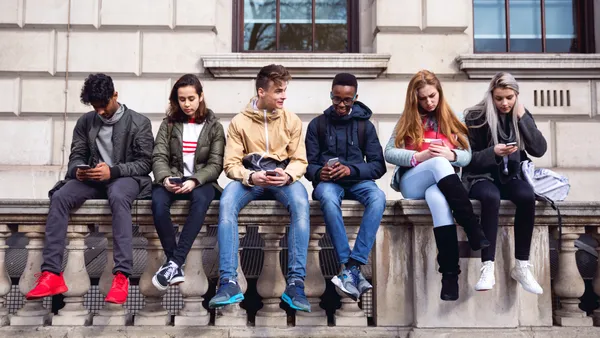Dive Brief:
- Following a resurgence in Halloween sales last year, a LendingTree survey of 1,603 U.S. consumers found that 87% of respondents plan to spend on Halloween this year, a 16% increase from 2021. While 70% of survey respondents are buying candy, nearly four in 10 are buying outdoor decorations and over a third are buying pumpkins or carving supplies.
- On average, consumers are planning to spend $169 on Halloween. Millennials plan to spend the most ($255), followed by Gen Z ($202), Gen X ($145) and Baby Boomers ($58), the survey found.
- Among the items customers plan to splurge on are costumes (16%), decorations (14%), Halloween-themed activities (11%) and full-sized candy for trick-or-treaters (11%).
Dive Insight:
After the COVID-19 pandemic upended the holiday season in 2020, retailers have been waiting for the period to return to normal.
Last year, retailers saw glimpses of consumer appetite for the holidays returning. In October 2021, the National Confectioners Association’s IRI data indicated that Halloween candy sales spiked 48% year over year in the eight weeks ending Oct. 4. Another report from October last year found that seasonal candy sales saw a 29% jump compared to 2020 and a 43% spike from 2019.
Retailers’ sales began to see a rebound as well. Party City, for example, saw its revenue rise 13.9% during the Halloween period to $415.5 million.
LendingTree’s report echoes other research indicating consumers plan to spend more during this upcoming Halloween. A September report from the National Retail Federation and Prosper Insights & Analytics predicts that shoppers will spend $10.6 billion on Halloween this year, an increase from $10.1 billion in 2021. The NRF analysis also found that Halloween shoppers plan to spend on candy, outdoor decorations, costumes, pumpkin carving and attending or hosting a party.
Though consumers are predicted to spend more on Halloween this year, the LendingTree survey indicated that consumers are concerned about inflation. The survey found that more than half (57%) of consumers said inflation has affected their Halloween shopping. To adjust for inflation, some survey respondents said they are reducing their candy purchases (23%), comparison shopping (20%), accounting for price increases (20%) and creating costumes and decorations instead of buying them (10%).
“With the worst of the pandemic further in the rearview mirror, people are excited to get back to spending on the things they love most — particularly the things they maybe couldn’t fully enjoy over the last few years,” LendingTree Chief Credit Analyst Matt Schulz said in a statement. “Americans love Halloween, so I’m not at all surprised to see more of us spending money on it.”













